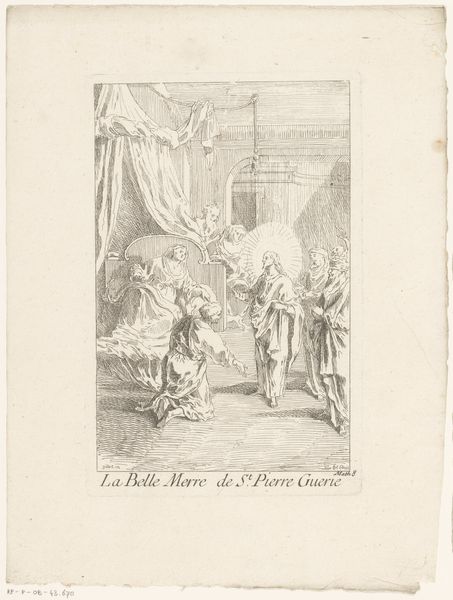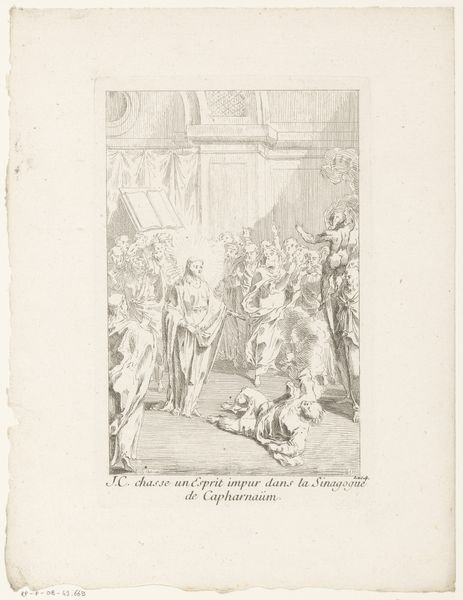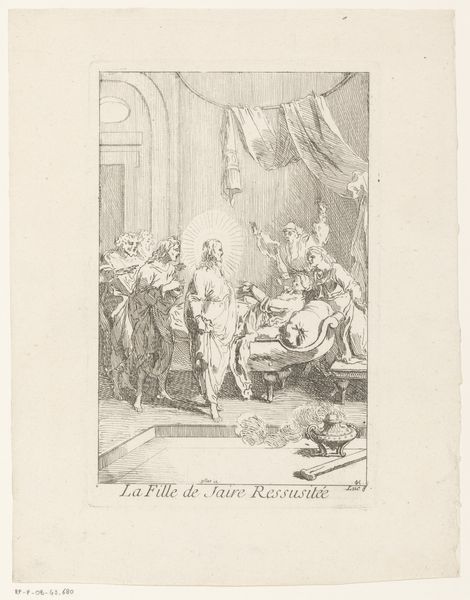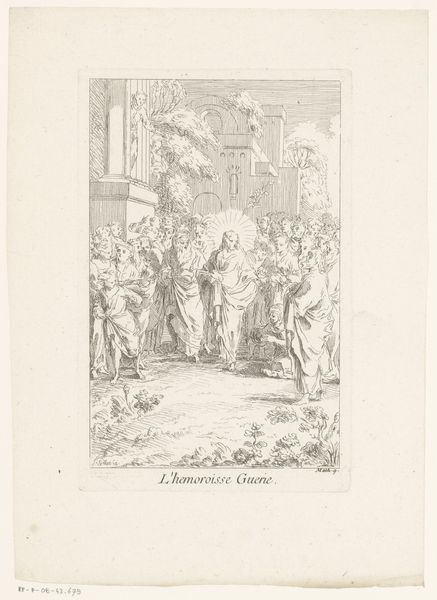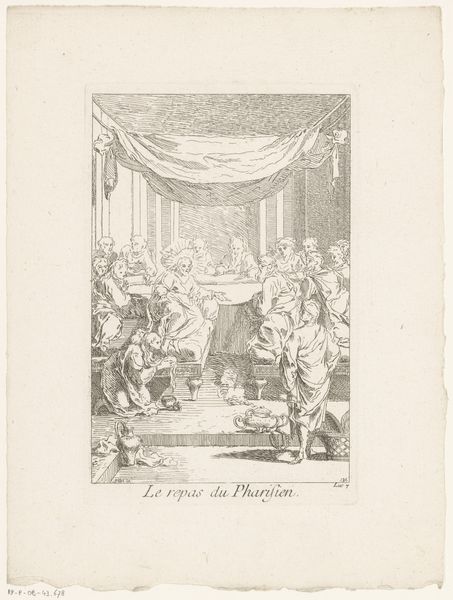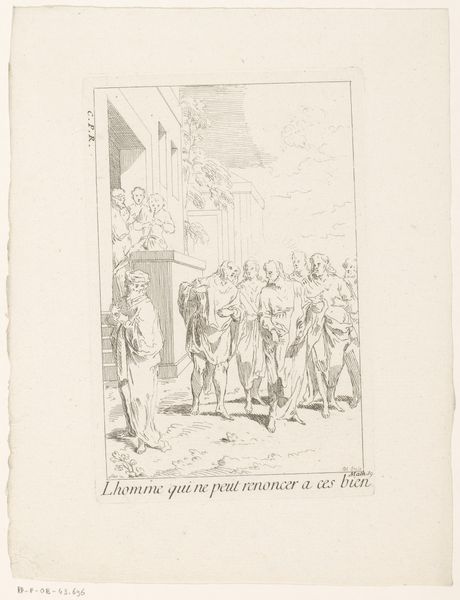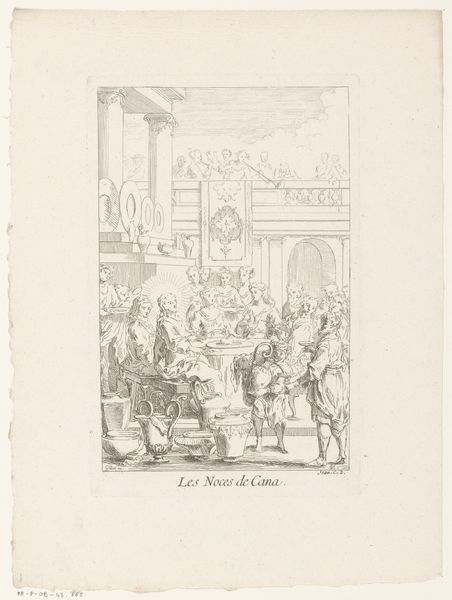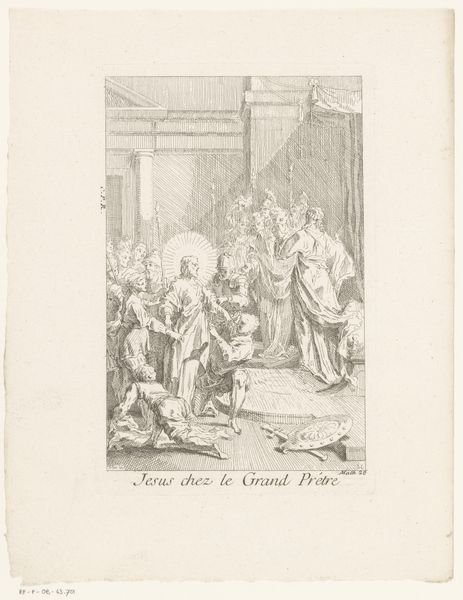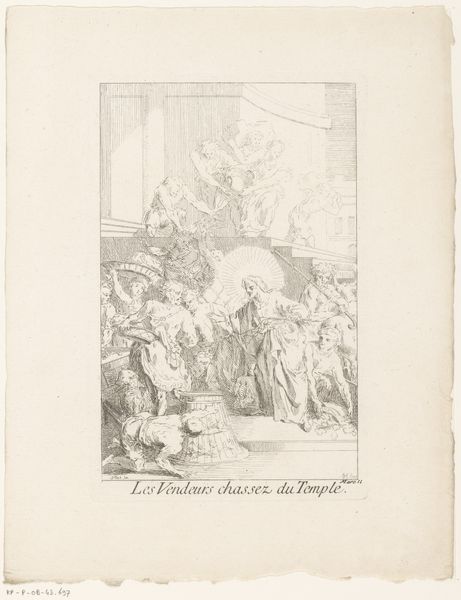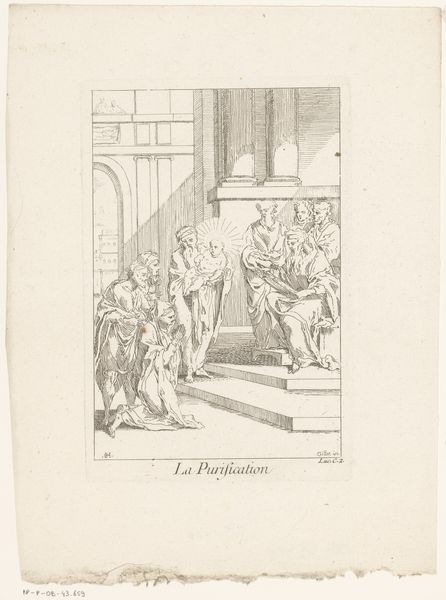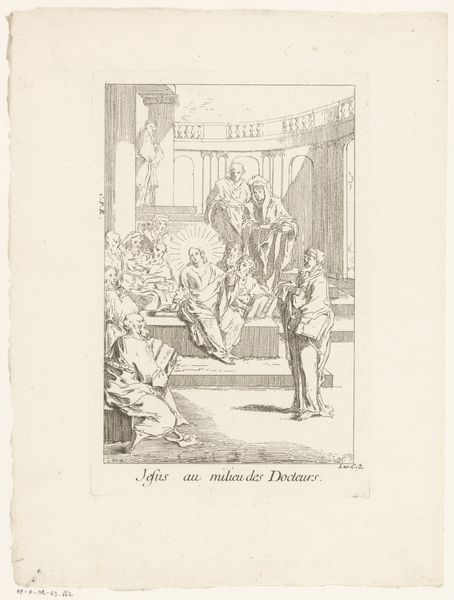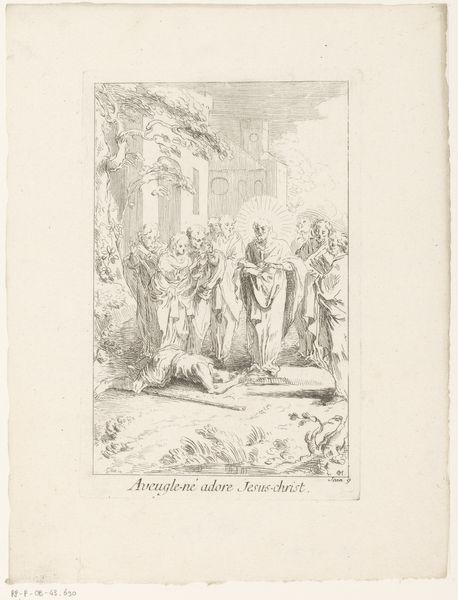
#
comic strip sketch
#
old engraving style
#
personal sketchbook
#
idea generation sketch
#
sketchwork
#
ink drawing experimentation
#
pen-ink sketch
#
sketchbook drawing
#
storyboard and sketchbook work
#
sketchbook art
Dimensions: height 197 mm, width 128 mm
Copyright: Rijks Museum: Open Domain
This print, depicting Christ and the woman taken in adultery, was made by Gabriel Huquier in the 18th century. It’s an etching, meaning that the image was created by drawing into a wax ground on a metal plate, and then bathing the plate in acid. The acid bites into the metal where the wax has been removed, leaving incised lines that hold ink. The character of those lines is crucial here; see how they create a wiry, almost nervous effect, particularly in the drapery folds. Huquier was a reproductive printmaker, meaning that he made his living by translating the designs of other artists into this graphic medium. The image could then be widely distributed and consumed. The etching process allowed for the relatively quick production of multiple images, making art more accessible to a broader audience. This commercial aspect is significant; it reflects the increasing commodification of art in the 18th century, and the rise of a market driven by consumer demand. While etching may not have the same aura as a unique painting, it allowed for the dissemination of ideas and images, contributing to the vibrant cultural landscape of the time. It bridges the gap between fine art and the wider world of commerce and consumption.
Comments
No comments
Be the first to comment and join the conversation on the ultimate creative platform.
